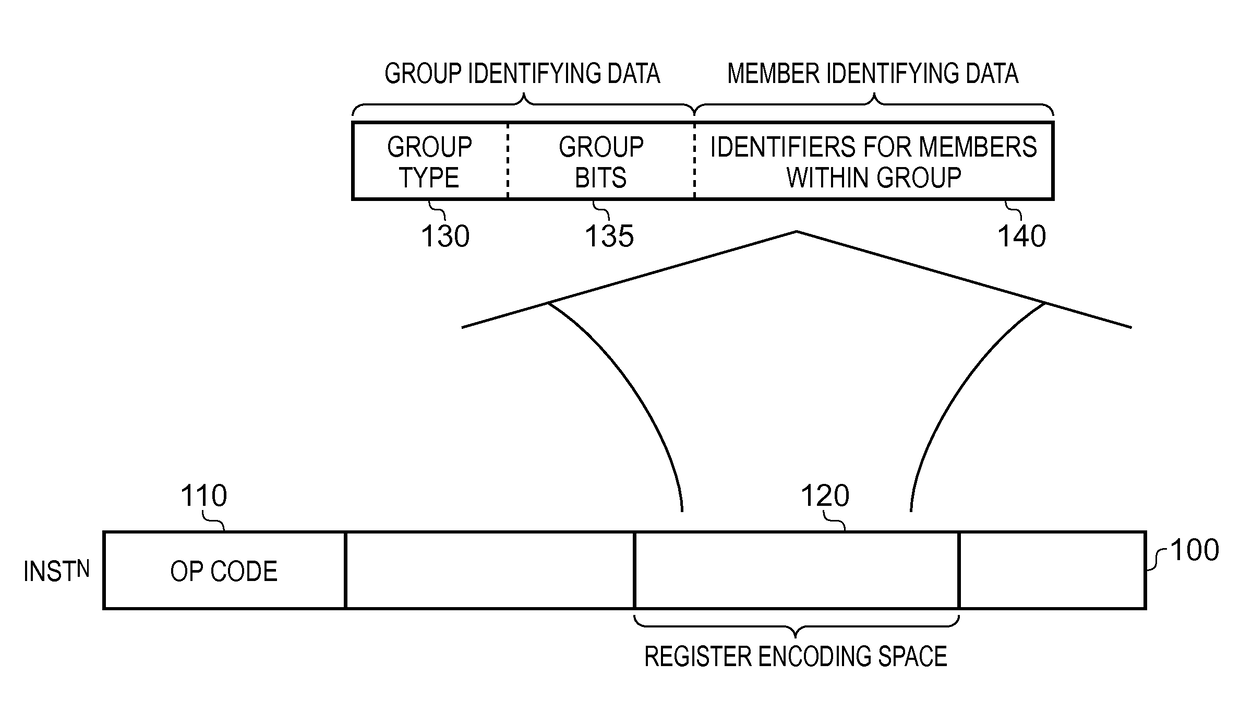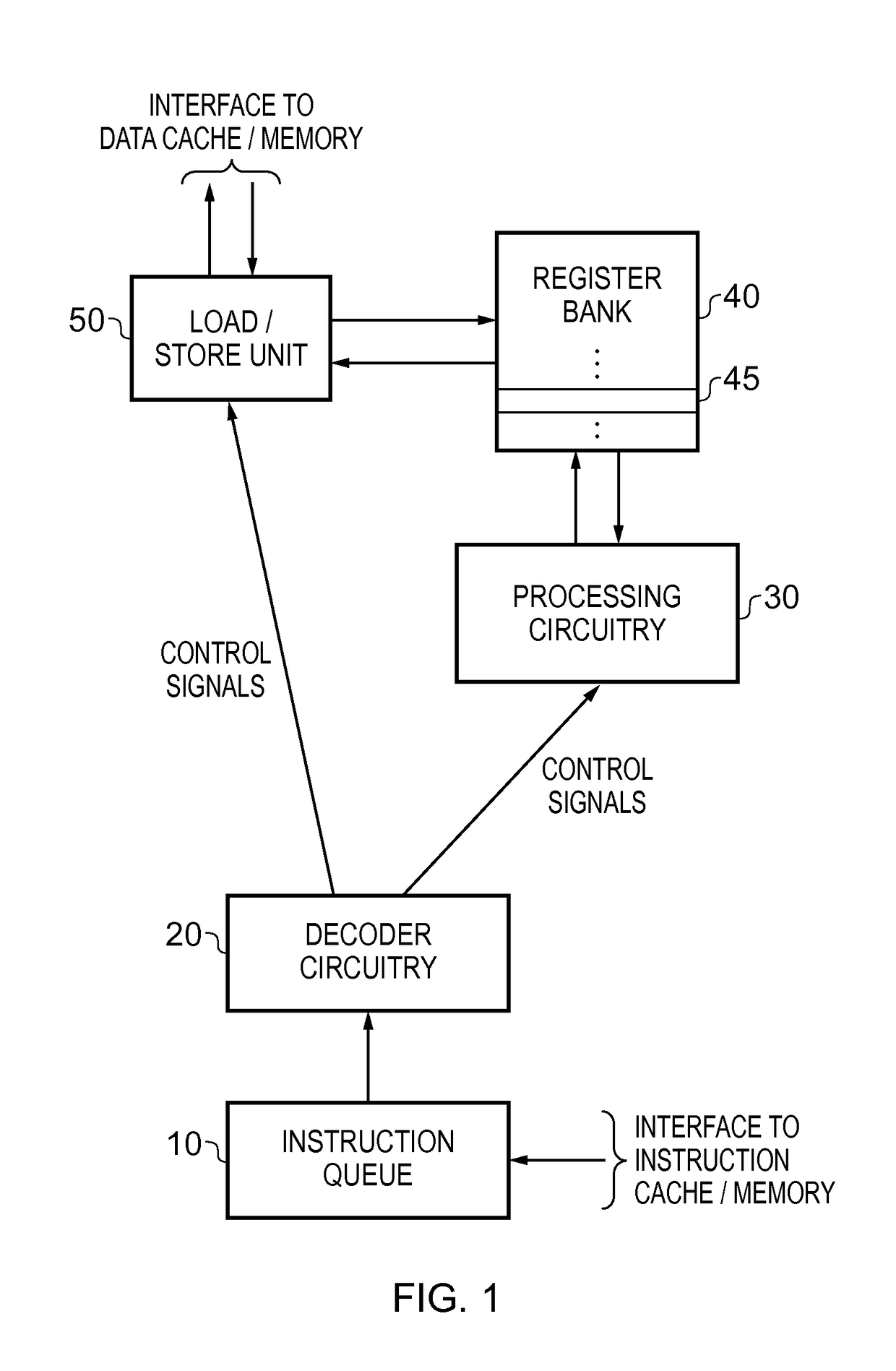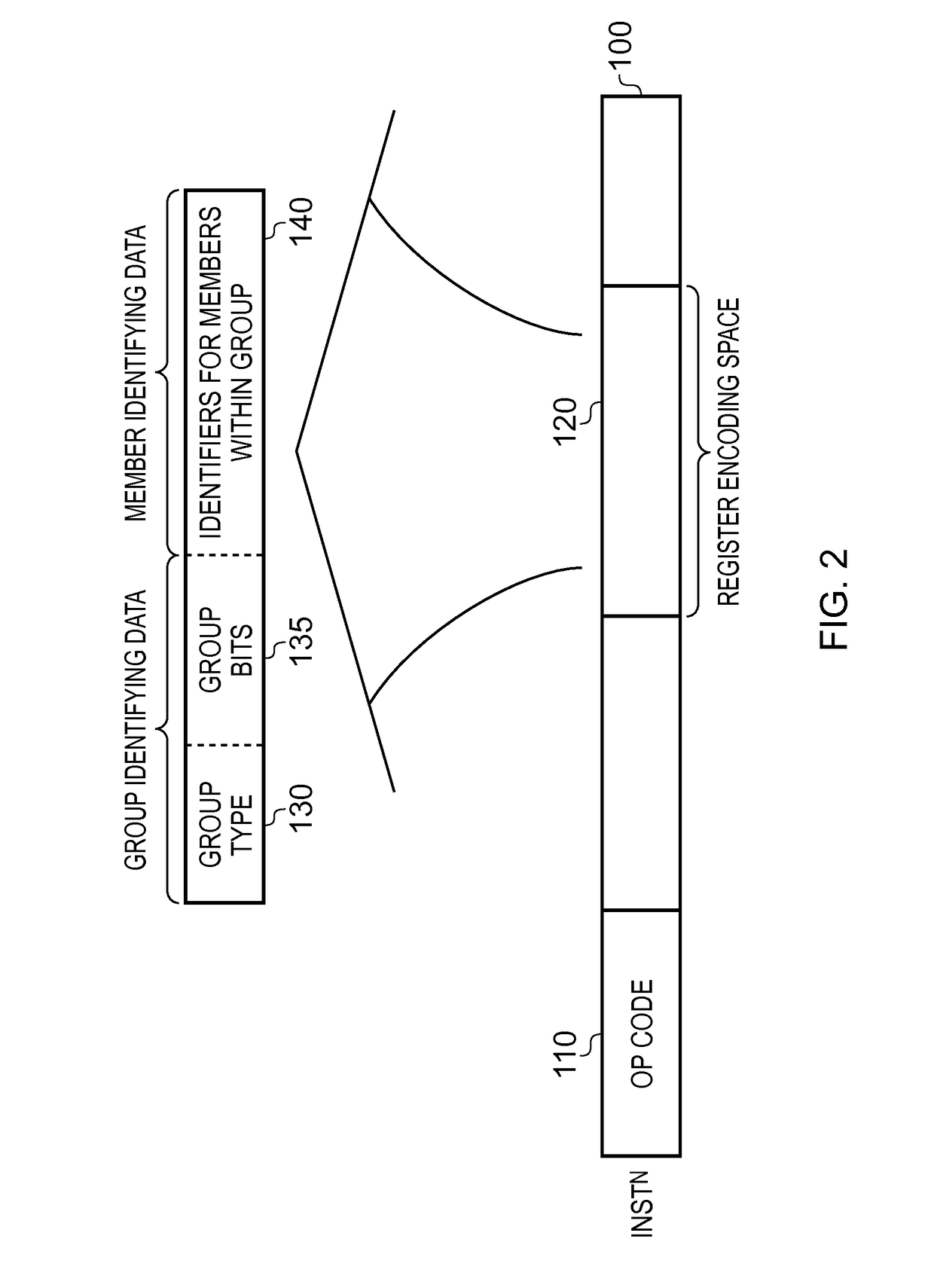Data processing apparatus and method for decoding program instructions in order to generate control signals for processing circuitry of the data processing apparatus
a data processing apparatus and program instruction technology, applied in the direction of program control, register arrangement, instruments, etc., can solve the problems of lack of flexibility in approach, limited ability of compilers to take advantage of actual physical registers, etc., and achieve simple and efficient encoding.
- Summary
- Abstract
- Description
- Claims
- Application Information
AI Technical Summary
Benefits of technology
Problems solved by technology
Method used
Image
Examples
Embodiment Construction
[0037]FIG. 1 is a block diagram of a data processing apparatus in accordance with one embodiment. In accordance with this embodiment, a stream of instructions are fetched from an instruction cache and / or memory, and placed in an instruction queue 10, from where the decoder circuitry 20 retrieves each instruction and decodes it in order to generate control signals sent to other components within the data processing apparatus. In particular, if the instruction is a load or store instruction used to load operand data from memory into the register bank 40, or to store operand data from the register bank back to memory, control signals will be sent to the load / store unit 50 in order to cause the required load or store operation to be performed. As will be understood by those skilled in the art, one or more levels of data cache may be provided between the load / store unit 50 and main memory, and accordingly data may be directly loaded in from one of the levels of the data cache into the re...
PUM
 Login to View More
Login to View More Abstract
Description
Claims
Application Information
 Login to View More
Login to View More - R&D
- Intellectual Property
- Life Sciences
- Materials
- Tech Scout
- Unparalleled Data Quality
- Higher Quality Content
- 60% Fewer Hallucinations
Browse by: Latest US Patents, China's latest patents, Technical Efficacy Thesaurus, Application Domain, Technology Topic, Popular Technical Reports.
© 2025 PatSnap. All rights reserved.Legal|Privacy policy|Modern Slavery Act Transparency Statement|Sitemap|About US| Contact US: help@patsnap.com



